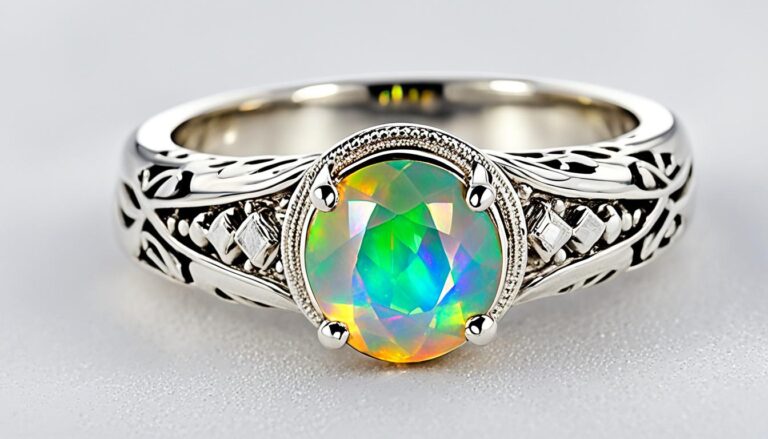How Do Ethiopians Greet Each Other?
How Ethiopians Greet Each Other
Ethiopia, known for its rich cultural heritage and diverse traditions, has a unique way of greeting that reflects the values and norms of its society. Greetings in Ethiopia are more than just a polite gesture; they hold deep cultural significance and play a crucial role in everyday interactions.
One of the most common ways Ethiopians greet each other is by shaking hands. However, unlike in Western cultures where a firm handshake is preferred, Ethiopians opt for a softer handshake that is gentle and warm. This gentle handshake signifies respect and friendliness towards the other person.
In addition to handshakes, Ethiopians often greet each other with a traditional gesture called the "Eskesta." This form of greeting involves gently knocking each other’s shoulders while exchanging pleasantries. The Eskesta is not only a greeting but also a form of non-verbal communication that conveys warmth and closeness between individuals.
Moreover, Ethiopians are known for their use of respectful titles when addressing each other. Titles such as "Ato" for men and "Woizero" for women are commonly used as a sign of respect during greetings. This emphasis on respect and hierarchy is deeply embedded in Ethiopian culture and is reflected in their traditional greeting customs.
Furthermore, Ethiopians greet each other with a sense of hospitality and warmth. It is common for people to ask about each other’s well-being, families, and experiences during greetings. This genuine interest in the other person’s life fosters strong social bonds and relationships within the community.
The way Ethiopians greet each other is a reflection of their cultural values of respect, warmth, and hospitality. By understanding and appreciating these unique greeting customs, one can gain insight into the rich tapestry of Ethiopian culture and society.
Traditional Ethiopian Greetings Customs
When it comes to greetings in Ethiopia, it is not just a customary exchange of words; it is a significant part of the culture that reflects respect, warmth, and hospitality. Traditional Ethiopian greetings involve a series of elaborate and meaningful gestures that showcase the deep-rooted traditions of the country.
One of the most common ways Ethiopians greet each other is by shaking hands. This gesture is accompanied by a warm smile and a slight bow. It is essential to note that the right hand should be used for greetings, as the left hand is considered impure in Ethiopian culture.
Another traditional greeting custom in Ethiopia is the ‘Eskista’ dance. This dance involves intricate movements of the shoulders, neck, and head, and is often performed during social gatherings and celebrations. The ‘Eskista’ dance is a vibrant and joyful way of expressing greetings and building camaraderie among individuals.
In rural areas of Ethiopia, it is customary for younger individuals to greet their elders by bowing down and touching their knees as a sign of respect. This gesture symbolizes humility and reverence for the older members of the community.
Furthermore, Ethiopians often exchange pleasantries and engage in small talk before addressing the main purpose of their interaction. This emphasis on building rapport and establishing a personal connection highlights the value placed on relationships in Ethiopian culture.
Traditional Ethiopian greetings customs go beyond simple verbal exchanges; they encompass a rich tapestry of gestures, dances, and expressions that signify respect, warmth, and a sense of community. These customs play a crucial role in fostering relationships, bridging cultural gaps, and preserving the cultural heritage of Ethiopia.
Significance of Greetings in Ethiopian Culture
Ethiopian culture places significant importance on greetings as they are considered a fundamental aspect of social interaction, reflecting respect, goodwill, and community values. Greetings in Ethiopia are not merely perfunctory but are deeply rooted in traditions that emphasize hospitality, connection, and unity among individuals.
In Ethiopian society, greetings serve as a reflection of one’s upbringing and respect for others, with different forms of greetings denoting various levels of familiarity and formality. For instance, a common traditional greeting in Ethiopia involves a handshake accompanied by a gentle bow and a pleasant smile. This gesture signifies warmth and welcome towards the other person.
Moreover, greetings in Ethiopia often involve the exchange of pleasantries and inquiries about one’s well-being, family, and work, showcasing a genuine interest in establishing meaningful connections. These verbal exchanges go beyond surface-level interactions and demonstrate a desire to understand and engage with others on a personal level.
Furthermore, greetings play a crucial role in establishing rapport and building trust in Ethiopian communities. By exchanging greetings respectfully and attentively, individuals foster a sense of belonging and create a harmonious social environment based on mutual respect and understanding.
In Ethiopian culture, greetings are not limited to verbal communication but also extend to non-verbal cues such as eye contact, facial expressions, and body language. These subtle gestures enhance the sincerity and warmth of the greeting, emphasizing the importance of non-verbal communication in conveying respect and empathy.
The significance of greetings in Ethiopian culture lies in their ability to foster social cohesion, strengthen interpersonal relationships, and uphold the values of respect, kindness, and unity within the community. By honoring these age-old traditions of greetings, Ethiopians preserve their cultural heritage and reinforce the bonds that connect individuals across diverse backgrounds and experiences.
Unique Aspects of Ethiopian Communication Styles
Ethiopia, a culturally rich and diverse country in the Horn of Africa, boasts unique communication styles that set it apart from other cultures. Ethiopians highly value interpersonal relationships, and this is reflected in their communication practices. One of the notable aspects of Ethiopian communication is the emphasis on respect and hierarchy. In Ethiopian society, age and social status play a significant role in how individuals interact with one another. Elders are respected and revered, and younger individuals are expected to show deference in their communication.
Moreover, Ethiopians have a strong sense of community and collectivism, which is evident in their communication styles. Group harmony is valued over individual expression, leading to indirect communication patterns. Ethiopians often use non-verbal cues and gestures to convey messages, relying heavily on implicit communication. Additionally, Ethiopians tend to avoid confrontation and prioritize maintaining positive relationships, even if it means being non-confrontational in their communication.
Furthermore, language plays a crucial role in Ethiopian communication styles. Ethiopia is a linguistically diverse country with over 80 different ethnic groups, each speaking its own language. Amharic is the official language of Ethiopia and serves as a unifying factor among different ethnicities. The use of language in communication reflects respect for cultural diversity and the importance of language in preserving Ethiopia’s rich heritage.
In Ethiopian communication, greetings hold particular significance and are seen as expressions of respect and goodwill. Greetings are elaborate and often include handshakes, bows, and other gestures depending on the relationship between individuals. Ethiopians use formal titles and greetings to show respect, and it is essential to address others using their appropriate titles, especially in formal settings.
The unique aspects of Ethiopian communication styles, including emphasis on respect and hierarchy, collectivism, indirect communication patterns, linguistic diversity, and the significance of greetings, showcase the richness of Ethiopian culture and the value it places on relationships and community harmony.
Evolution of Greeting Traditions in Ethiopia
Greetings in Ethiopia have a rich history deeply embedded in the country’s diverse cultural tapestry. The evolution of greeting traditions in Ethiopia reflects not only the unique customs and practices of its various ethnic groups but also the values and beliefs that have been passed down through generations. Understanding how these traditions have developed over time provides valuable insights into the social fabric of Ethiopian society.
Ethiopia, known for its warm and welcoming people, places great importance on greetings as a way to show respect, hospitality, and a sense of community. Traditional Ethiopian greetings often involve a series of polite exchanges that go beyond a simple "hello." For example, it is common for individuals to inquire about each other’s well-being, family members, and even the latest news before engaging in other forms of conversation.
In rural areas, where traditional customs are more prevalent, Ethiopians often greet each other by bowing their heads slightly or offering a gentle handshake. Moreover, elders are highly respected in Ethiopian culture, and younger individuals are expected to show deference by greeting them first. This hierarchical structure is an essential aspect of Ethiopian greetings, underscoring the significance of age and social status.
With the influence of modernity and urbanization, greeting customs in Ethiopia have evolved to incorporate more Western practices. While traditional forms of greetings are still prevalent, especially in rural communities, urban Ethiopians may greet each other with a simple handshake or even a nod of the head. Additionally, the use of technology, such as mobile phones and social media, has also impacted how Ethiopians greet each other, with text messages and phone calls becoming common ways to stay connected.
Despite these changes, the essence of Ethiopian greetings remains rooted in the values of respect, kindness, and friendship. Greetings serve as a fundamental aspect of social interactions in Ethiopia, creating bonds between individuals and fostering a sense of unity within the community. As Ethiopia continues to embrace modernity while honoring its cultural heritage, the evolution of greeting traditions reflects the dynamic nature of Ethiopian society and the enduring importance of interpersonal connections.
Conclusion
In Ethiopian culture, greetings are more than just polite gestures; they are woven into the very fabric of society, reflecting the warmth, respect, and deep sense of community that Ethiopians hold dear. The traditional Ethiopian greetings customs are diverse and rich, ranging from the intricacies of the cheek-to-cheek "eskesta" to the profound hand-clasping of the "elshaday." These gestures are not mere formalities but rather expressions of genuine connection and goodwill between individuals.
The significance of greetings in Ethiopian culture cannot be overstated. Greetings serve as not only an initial acknowledgment but also as a means of fostering unity, building trust, and affirming social hierarchies. From the respectful bows of younger individuals to the blessings bestowed upon elders, each greeting carries layers of meaning that reinforce the cultural values of respect, humility, and interconnectedness.
What sets Ethiopian communication styles apart are the unique aspects embedded within their greetings. The emphasis on physical touch, such as handshakes and hugs, reflects the deeply communal nature of Ethiopian society. Moreover, the use of poetic proverbs and blessings in greetings adds an element of artistry and spirituality, infusing everyday interactions with grace and elegance.
As Ethiopian society evolves, so too do its greeting traditions. Urbanization, globalization, and technological advancements have influenced how Ethiopians greet one another. While traditional customs remain deeply ingrained, younger generations are also incorporating modern elements into their greetings, such as exchanging pleasantries via social media or adapting greetings to suit contemporary lifestyles.
Despite these changes, the core values of respect, warmth, and unity remain at the heart of Ethiopian greetings. The evolution of greeting traditions in Ethiopia is a reflection of a dynamic society that honors its past while embracing the future. By preserving their rich cultural heritage and adapting to changing times, Ethiopians ensure that the art of greeting continues to be a vibrant and essential aspect of their daily lives.
The art of greeting in Ethiopia is a profound reflection of the country’s cultural richness and social intricacies. From traditional customs that date back centuries to modern adaptations that reflect the dynamics of contemporary life, Ethiopian greetings are a window into a society that values connection, respect, and community above all else. As Ethiopians continue to greet each other with grace, warmth, and reverence, they uphold a tradition that not only unites individuals but also celebrates the collective spirit of a nation.



